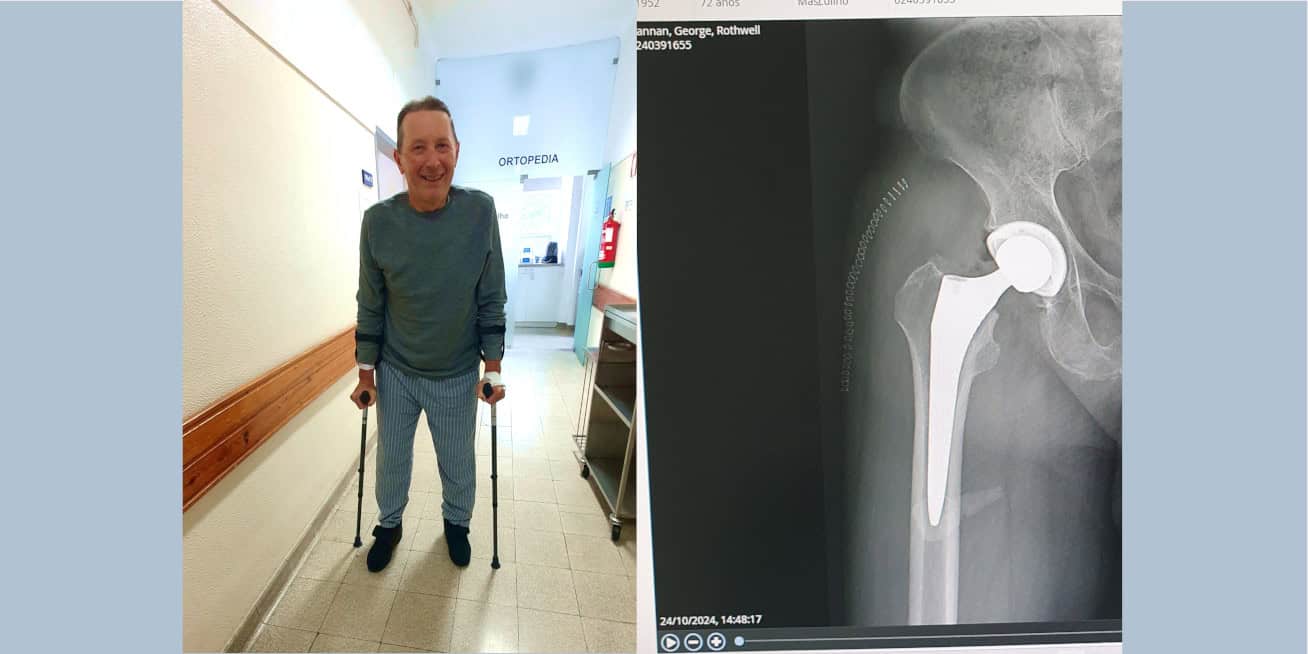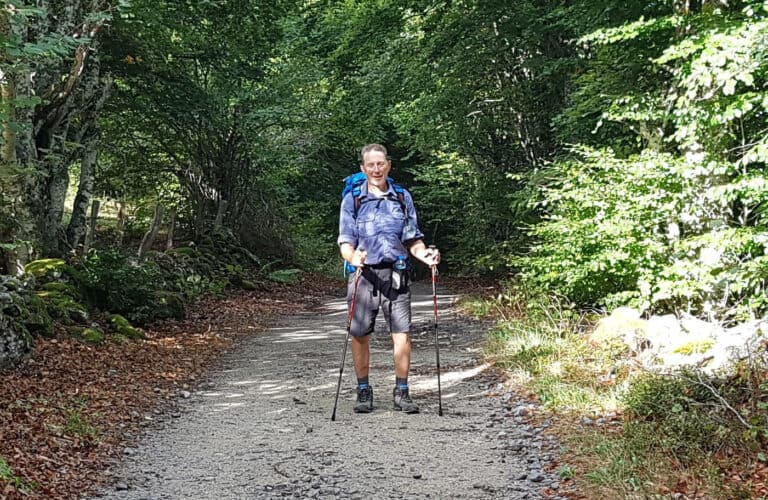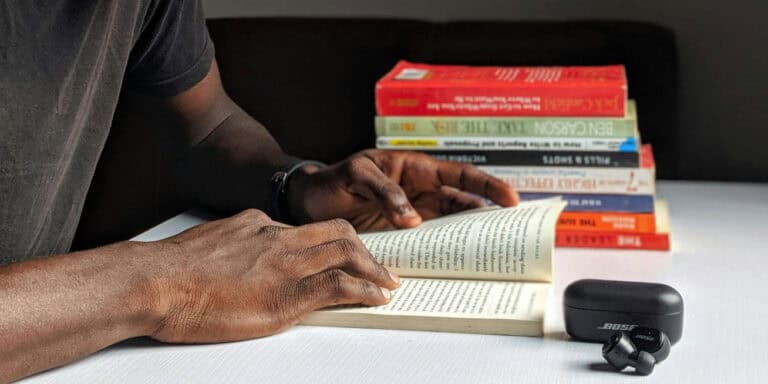Total Hip Replacement – A Positive Outcome
Hip Replacement? – The Short Answer
What’s a hip replacement operation like? This article outlines my recent total hip replacement experience. It’s from the perspective of one particular case – mine. And I’m sure it might be different for others, which is important to bear in mind. But to cut to the chase, just over ten weeks post-op now: total hip replacement – a positive outcome for me, yes or no?
Simply, yes indeed. I’m very glad I decided to have it done. And I’m very grateful to those who pointed me in the right direction. It’s still early days in the recuperation process, but I can already feel benefits. For example, even now I can walk up inclines without discomfort or pain in the affected hip. But what about the post-op journey up to now?
Certainly, the first two weeks or so after the op were a bit of a challenge. After that things started to improve quickly. I’ll speak a little more about those first days below. But before that I’ll touch on the background to the whole thing. Then some interesting details about the op and the period immediately following. And ending with a short account of the last couple of weeks, between about week six and now, completing week ten post op.
No Clear Problem Starting Point
Looking back, there was no clear point when it became obvious there was an osteoarthritis problem in my right hip. I’m seventy-two now, and have been an active hiker and cyclist for many years.
Over time I’ve taken a couple of falls related to outdoor activities, both on my right side, and a car accident which also resulted in a heavy impact on my right side. No bones were evidently broken, but I suspect these incidents contributed to the hip problem. And ageing of course.
About six or seven years ago was the first time I felt a tightness in my right groin while I was on a multi-day long-distance hike. I kept hiking and cycling, and sometimes the ache in my groin became problematic, while other times it wasn’t noticeable at all.
So I thought I could perhaps train the problem away, keeping up regular hiking and cycling activities. And it worked to some extent – my partner and I even did a 10-day 220km hike two years ago. But there was discomfort in my hip and I had to be careful, especially on the inclines, not to twist or take unnecessary pressure on the hip.
Most of the time cycling actually alleviated the discomfort and was therapeutic, except for a period some years back when the problem first emerged. For example, some tour cycling back in March this year, 180km+ over three days with a heavily-laden touring setup, caused no issues whatsoever.
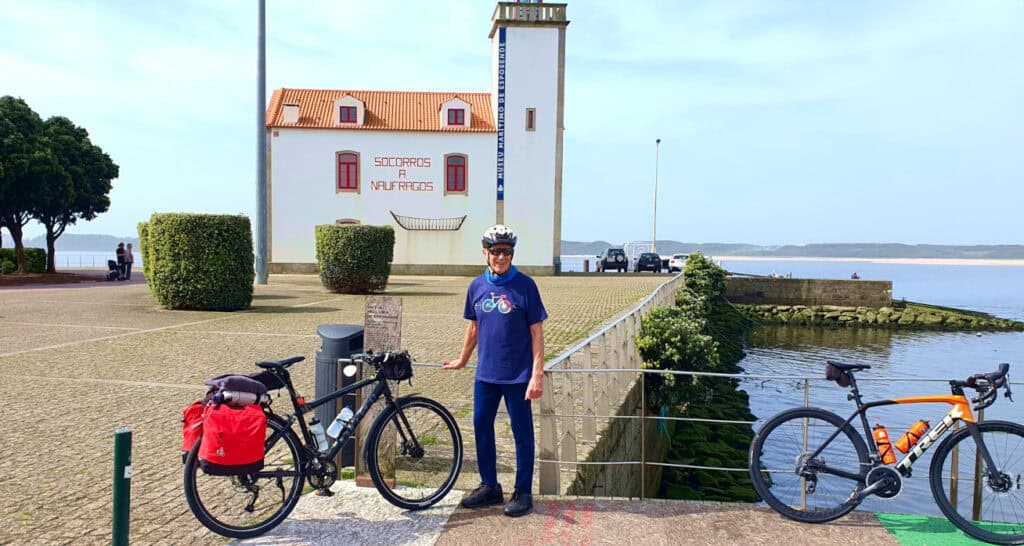
In preparation for our next long-distance hike about a year ago now, again I thought I could train the issue away. That was going ok, regular hiking and cycling, until I loaded about 7kg in my backpack and headed out on an 18km easy training hike. That caused significant pain at the end, and I was limping badly. Clearly there were problems that training wasn’t going to address.
Hip Investigation
My family GP arranged an X-Ray. The radiologist concerned only produced a short report, a few lines, making cursory comment about ‘some wear’ in the joint. And the matter was shelved.
But walking anything more than a casual stroll was becoming more and more problematic. That’s not good news for an obsessive outdoor person, hiker and cyclist! So I got a copy of the X-Rays on disk, and back onto our family GP requesting a consultation with an orthopaedic consultant, which she arranged.
I’m also a member of a fantastic Facebook Group called ‘Cycling for those aged 70+’. Many members have recounted their experiences of hip replacement, and the positive effect on their cycling activity thereafter. I found this very interesting and helpful.
Meanwhile I had my hip X-Rays on disk, which needed a special file reader to access.
So I immediately thought back to a professional acquaintance of mine from some years back, Shane Lawlor of Lawlor Clinic. Shane is a highly qualified and experienced chiropractor and sports injury specialist.
Chiropractor and Orthopaedic Consultant Opinions
I asked Shane to examine the X-Rays and offer an opinion. He confirmed straight away that osteoarthritis in the joint was problematic and that hip replacement was the best option. He indicated a very likely successful outcome in terms of the outdoor activities that are so important to my partner and I in maintaining our health and the lifestyle we enjoy. Shane also gave me a series of exercises to help maintain some flexibility in the hip joint and improve muscle strength.
And some short weeks later our meeting with the orthopaedic consultant / surgeon from the Portuguese public health system at the local hospital took place. A very impressive, helpful, and likeable young professional. He confirmed the hip joint was a mess, expressing surprise that I could do any walking at all, much less the 5+km that I was still able to manage up to then.
I had no hesitation opting for hip replacement surgery.
This was June 2024, and he indicated I should expect to be called for all the pre-op tests, and the operation itself about September / October 2024. Which is exactly what happened, the specific date being Monday, 14 October.
As an aside, I also met with a well-known private orthopaedic consultant, who delivered the same diagnosis. But I much preferred the disposition of the public health system consultant / surgeon.
Hip Replacement Surgery Day
Everything was clearly explained by the surgical team on the day. The operation was carried out under epidural anaesthetic, no feeling from the waist down. This was considered the most effective and lowest risk for my age profile. With the help of sedatives of course, to waylay any possible anxiety about what was going on.
Interesting experience, because I had some awareness of some of the things they were doing. I have a recollection of someone drawing a line along my hip where the incision would have been. Possibly the scalpel itself, who knows. And someone doing some carpentry on my leg, specifically hammering, literally, the prosthesis spike into the hollow of the femur bone. I recall thinking that must be what they’re doing. But I didn’t care, and just drifted off again to some subconscious nether region.
Next I recall I was being wheeled to the ward and carefully placed on my bed for the night. No pain, but no feeling in my legs. It was a full 24 hours post-op before I had any feeling or movement in my legs.
The first night wasn’t particularly comfortable, but not especially uncomfortable either. Always nurses about to help if needed.
Something amusing, even in the midst of all this. There was a control button suspended above the bed which I thought was to call the nurse, if for example I was uncomfortable and needed to shift my body position a little. Mid way through the night I needed to, so pressed the button. No nurse, pressed again. Even pressed a third time before I gave up. But I was feeling much better at that point anyway, no longer needed the nurse.
Only in the morning, when I asked, I discovered the button was for an extra shot of painkiller! The nurse alert button was a little further behind, and I didn’t see it. No wonder I felt much better! They explained later there was no risk of getting strung out on painkiller though – automatically limited to just one extra shot in any single 15-minute interval! But it works!
I’d done what training I could before going into hospital, including losing about 5kg in weight, from 82kg down to 77kg. This was to make my body as resilient as possible, and to aid and speed up recuperation.
Going Home Day
The norm is apparently three nights in hospital. But I was discharged after two nights, as I was able to get out of bed and, with help from nursing staff, and crutches, take some tentative mini-steps, more a shuffle, with my new hip! But enough to clear the bar and go home! Obviously still on a high painkiller dosage. No doubt helped by my good physical condition and carrying little, if any, extra weight.
Careful Step By Careful Step
Everything was a challenge for the next couple of weeks, and not without some discomfort and pain, for which strong medication did help. Very limited and slow movements. Dressing and undressing, getting into and out of bed, bathroom and showering, the lot. At least I had one good, strong, leg and it did most of the work.
I had to be very careful to avoid movements that could compromise the prosthesis or the wound. For example, no hip bends of more than 90 degrees, no crossing my legs or turning the toe of affected leg inwards, no sitting on very low seats, and others. The hospital after-care staff clearly explained movements and situations to avoid. And of course avoid stumbling or falling at all costs.
To manage this stage of the process at home I needed a lot of help and support from my partner. This was crucial. I just didn’t have the strength or mobility to manage independently.
But I found ways to sit, move, lie down, go to the toilet, etc., that reduced the discomfort. Sleeping on the side where the op took place was not allowed.
To add to the overall care I had to give myself a daily anti-blood-clotting injection for 24 days. I’m kind of averse to sticking needles in myself, so that wasn’t much fun, but got through it. Seems blood clots are a risk with this type of procedure.
Day By Day Improvement
But things got better and became easier day by day. This steady improvement was a great motivation.
The wound was dressed twice weekly for the first two weeks at the local health centre, after which they removed the wound staples. That helped comfort levels quite a bit.
I was on two crutches for the first month. After the first two weeks or so I was able to take short daily walks outside, maybe two or three hundred metres, aided by the crutches. Being super-careful going up and down steps, and always making sure my good leg was taking the strain, especially on steps.
After a checkup with the consultant he ok’d using a single crutch from then on. My hip took some days to build some strength again and feel comfortable using a single crutch. But all the while mobility was improving and any discomfort decreasing. At this point I was able to shower and dress unaided, but being super-careful getting in and out of our walk-in shower.
And from there it was just a question of being patient and giving the body the time and space to recover and rebuild.
And Patience Pays
My daily walks got longer, though I still use one crutch to ease the strain if I’m walking more than maybe half a kilometre. I can also also take shortish, maybe 10km or less, easy bicycle rides, no problem. I just need to be careful to keep the strain on the new hip to a minimum by leaning well forward and down towards the handlebars while mounting and dismounting.
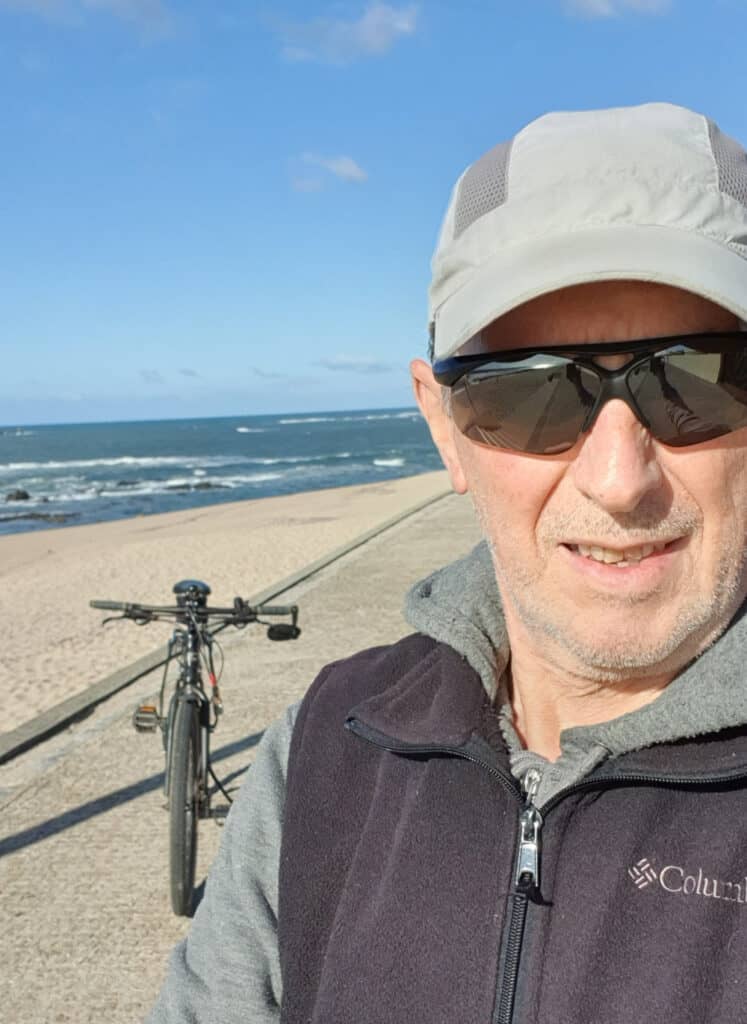
Apart from that it’s just a question of appreciating that especially the leg with the new hip will have lost a lot of muscle mass and strength, and act accordingly. Mobility is approaching normal now, with just some restriction on the range of movement of the hip, and endurance.
Looking Back And Looking Ahead
As Cecelia, one of the wonderful nurses, said as I was being discharged, “don’t rush it or get carried away”, and that great advice has worked very well.
Now, Spring and Summer months are ahead. It’s just fantastic to be looking forward to getting back to cycling, pain-free hiking and outdoor activity again. My sincere thanks to all who helped me so much in the hip replacement adventure, especially my partner Tania, the fantastic local hospital consultant / surgeon and his team, the hospital staff, and Shane Lawlor of Lawlor Clinic.
Update: 3-Month Check-up, Mon 13 January, 2025
A routine check-up by the orthopaedic surgeon / consultant. Top marks on all counts, he said excellent progress, and in fact well ahead of the average recuperation curve.
Can balance and support my full weight on the operated hip. No discomfort or balance issues. He said this was an excellent sign of good progress with bone and prosthesis osseointegration (bone ingrowth into a metal implant).
No problem with walking moderate distances. He was less keen on cycling at this stage. He didn’t elaborate. I suspect he had mountain biking in mind, which is a big scene in this area. However, all my cycling is on the flat, either paved or gravel trails. So I kept mum, but will stick to some cycling, moderate distances, on our normal trails for now.
He said full healing and osseointegration takes at least 6 months, and urged ‘still taking it relatively easy’ to ensure full healing and not compromising the excellent progress to date.
Of course I intend to follow his advice. He scheduled a 6-month routine check-up for April 2025, and said if progress continued at the current rate he’d then be happy to advise the ‘all clear’ on hiking and cycling to whatever extent I desired!
Great news, and now planning our Via Francigena hike for end May 2025 is a ‘Go’!
Update: 6-Month Check-up, 14 April 2025
Today got the “all-clear” from the consultant / surgeon to get on with a normal life now. He said everything is perfect at this stage and just scheduled a 1-year check-up for October 2025. He just cautioned against high-impact activities such as jogging, as it may increase wear on the new hip joint. That’s not a constraint for me since I’m not into jogging.

